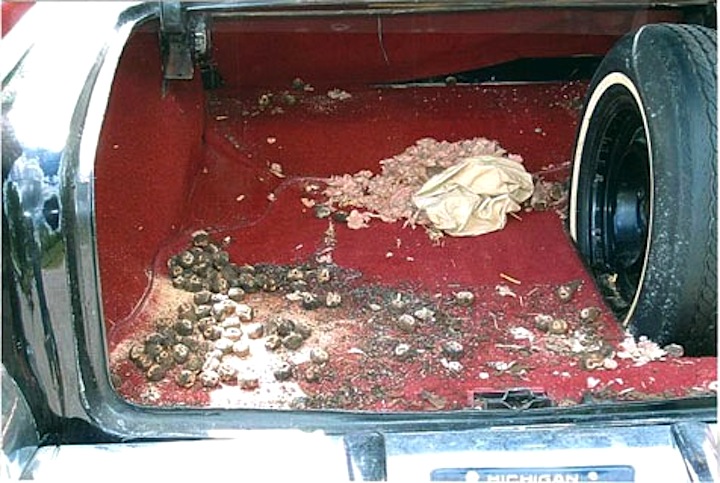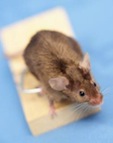Three tips to protect classic car from mice and rat damage

(September 1, 2014) If you store your classic car, muscle machine, sportster, collector, or restored summer car over the winter, and think it's protected from mice by being locked in the garage or car shed, think again.
An unused, protected vehicle or car puts up a gigantic "Welcome!" sign for mice and rats looking to come in out of the cold. They'll perform unthinkable acts in unimaginable places, and cleaning up their mess will cost you an unbelievable amount of money.
They'll find their way in under the car hood or through the air duct. Then they'll leave a urine trail so that they can find their way home when they leave. If they're in the ducts, you'll need to replace the entire duct system.
 Rodents will shred your vehicle or car headliner or seat cushions to make their nests soft for those romantic evenings and the resultant litters. A mouse couple can create 15,000 babies, grand-babies, and great-grand-babies in one year — in your car's back seat.
Rodents will shred your vehicle or car headliner or seat cushions to make their nests soft for those romantic evenings and the resultant litters. A mouse couple can create 15,000 babies, grand-babies, and great-grand-babies in one year — in your car's back seat.
Rodents have to constantly gnaw on hard things. If they don't, their teeth grow so uneven that the rodent can't chew and dies malnourished. Mice and rats manicuring their teeth can destroy a vehicle or cars entire wiring harness or computer system overnight.
Here are three safe, easy ways to persuade those rascally rodents to spend their winter elsewhere.
• Clean out the vehicle or car, and the storage building. Remove all food that might attract rodents, which usually feed within 20 feet of their nest. Get every one of those sunflower seeds that wound up under the car seat.
• Remove any nearby source of water. Without a supply of food and water near your car, your battle's almost won. See 'resources' for more expert tips at www.keepmiceout.com
• Finally, place a proven rodent repellent in the vehicle's cab and trunk and under the car hood to drive away freeloading mice and rats.
